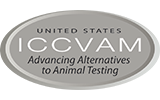In Silico Approaches in Carcinogenicity Hazard Assessment: Current Status and Future Needs
Historically, identifying carcinogens has relied primarily on tumor studies in rodents, which require enormous resources in both money and time. In silico models have been developed for predicting rodent carcinogens but have not yet found general regulatory acceptance, in part due to the lack of a generally accepted protocol for performing such an assessment as well as limitations in predictive performance and scope. There remains a need for additional, improved in silico carcinogenicity models, especially ones that are more human-relevant, for use in research and regulatory decision-making. As part of an international effort to develop in silico toxicological protocols, FDA and NIEHS scientists participated in a consortium of toxicologists, computational scientists, and regulatory scientists across several industries and governmental agencies to evaluate the extent to which in silico models exist for each of the recently defined 10 key characteristics of carcinogens. A position paper developed by the group (Tice et al. 2021) summarizes the current status of in silico tools for the assessment of each key characteristic and identifies the data gaps that need to be addressed before a comprehensive in silico carcinogenicity protocol can be developed for regulatory use.



